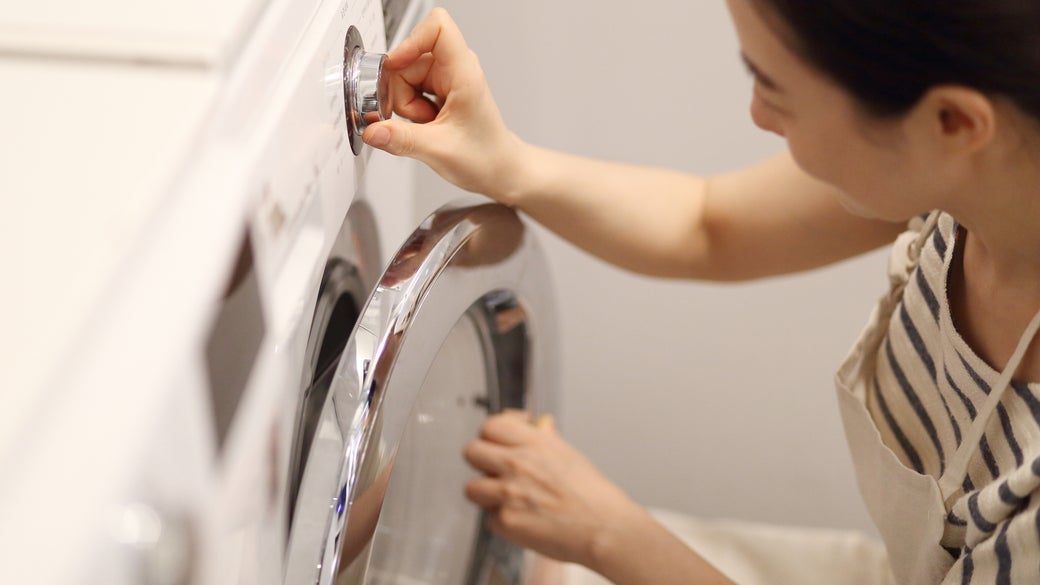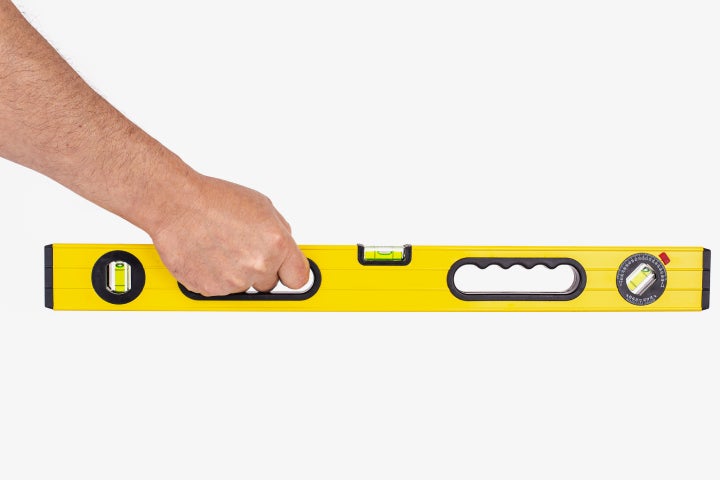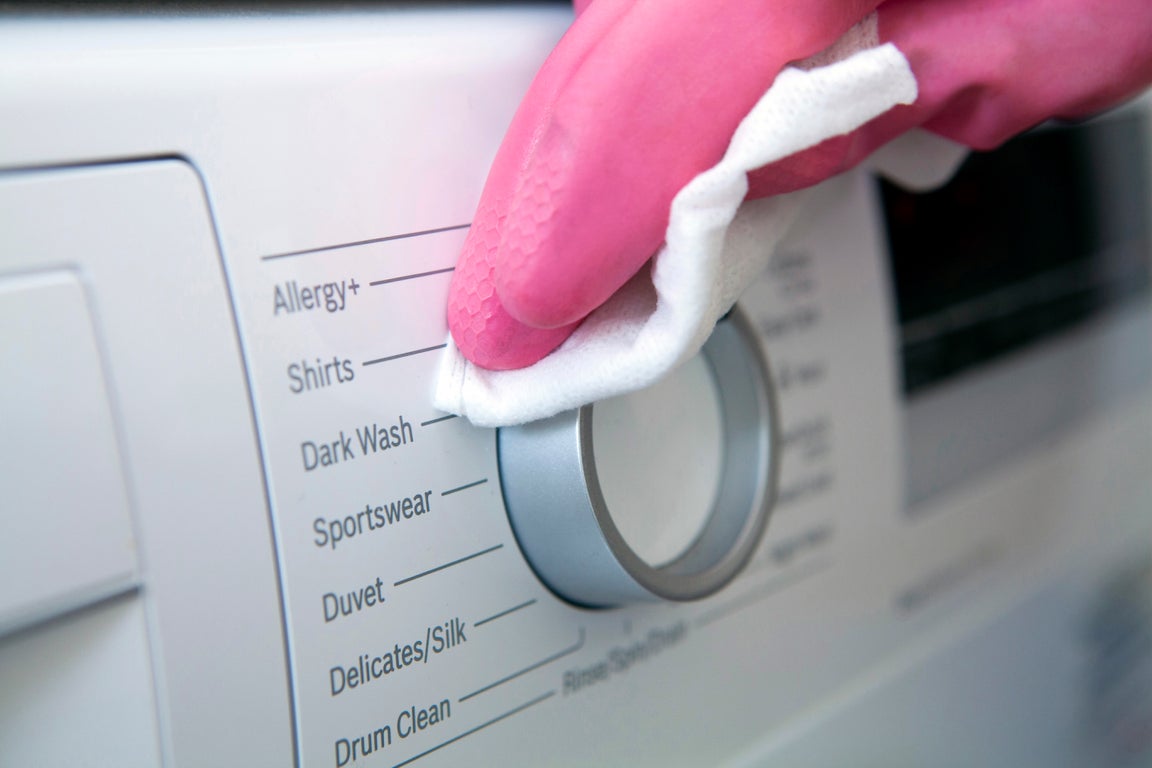After Cleaning With Clorox Bleach Does It Get Reactivated Once It Gets Wet Again
How to Wash Safely and Eliminate Leftover Bleach After Washing

When adding bleach to a load of whites, you can avoid bleach residue by using the bleach dispenser to add the recommended amount of bleach, and not overloading the washer.
Clothes washers are carefully engineered to remove laundry detergent and bleach from the washer when a load of laundry is washed, but many people still worry about bleach residue in the washer carrying over from one load to the next.
Understanding how clothes washers and bleach work together to clean clothes before the bleach is rinsed away can help relieve concerns about washing items with color after a bleach load.
Is your washer level?
When your washer was installed, the technician should have checked to make sure it's level from front-to-back as well as side-to-side, and adjusted one or more of the feet to bring it to level, if necessary.

A clothes washer that isn't level has a harder time spinning at a high enough speed to extract the water (and detergent, soil and any residual bleach) before the cycle is complete. An off-level clothes washer can also dispense bleach at the wrong time. Make sure your washer is level so it works properly.
Don't overload the washer
High-efficiency clothes washers use multiple low-volume rinses and high-speed spin cycles to remove detergent. When the washer attempts to increase the spin speed as part of normal cycle function, it checks to see if the load is off balance. If it senses this, it will only spin at a low speed, extracting less water and rinsing less efficiently. Properly loading the washer by following the instructions in the Use and Care Guide prevents this.
Use the bleach dispenser correctly
Bleach dispensers automatically add the bleach to the wash water at a preset time in the cycle. When it's time to add the bleach, the compartment holding the bleach is flushed with water. All the bleach goes into the washer, and no bleach residue is left behind in the dispenser. This ensures that bleach doesn't carry over to the next load.
To make sure your bleach dispenser doesn't add the bleach at the wrong time, make sure your washer is level, and fill the dispenser only to the "max fill" line. Adding too much bleach can cause the dispenser to add the bleach too early. Premature bleach dispensing can result in dye damage, so making sure your bleach dispenser is working properly is important.
Bleach naturally breaks down
Once bleach is added to the wash water, it quickly breaks down into salt and water as it interacts with soils and stains in the laundry. By the time the bleaching portion of the cycle has completed and the washer has drained away detergent and bleach, spun to extract wash water, and refilled with rinse water, the bleach concentration has been substantially reduced.
Bleach continues to break down during each additional rinse cycle, all while being further diluted and rinsed away as additional clean water is added during successive rinse cycles. By the time the wash cycle is complete, the interior surfaces of the clothes washer have no remaining residual bleach.
Spray rinses help keep standard washers free of bleach
Where high-efficiency clothes washers have multiple rinse cycles, standard clothes washers sometimes have just one deep fill rinse cycle. This is usually followed by a spray rinse, where the washer spins and drains at the same time clean water is sprayed into the machine to provide additional rinsing of detergent, soil and bleach from the load. One deep fill rinse combined with a series of spray rinses is enough to completely remove any bleach from a standard clothes washer.
Select an extra rinse
If you still are concerned about bleach carryover, select an extra rinse cycle when washing a bleach load if your machine has the option.
Wipe down your washer
Nearly all bleach damage is caused by accidental drips or spills that aren't cleaned up, not by bleach residue inside the washer. When a darker item brushes against a bleach drip, you won't see any dye damage immediately; it will show up later, which is why it's easy to blame it on residue in the clothes washer when it's actually not. Wiping down the exterior of your clothes washer will keep this from happening.

Related products
-

Related articles
Frequently asked questions
- How do you add bleach in a standard washer that doesn't have a bleach dispenser?
-
For best results in a standard washer with no bleach dispenser, dilute the measured amount of bleach in 1 quart of water. Add to wash 5 minutes after the wash cycle has begun.
- How do you add bleach in a high-efficiency washer with no bleach dispenser?
-
When your clothes washer doesn't have a bleach dispenser and locks you out of the washer, then you can't use regular bleach. Instead, use Clorox® Zero Splash Bleach Packs. These bleach products safely dissolve as the clothes washer fills with water, and are rinsed away just like regular bleach.
- Can I use bleach in a washer that heats the water in the machine?
-
Probably not! In general, clothes washers that heat the water in the machine advise against sodium hypochlorite bleach. You can tell if your washer has an in-line heater if it allows you to select higher wash temperatures like 90℃. Check the Use and Care Guide for your washer to make sure you only use laundry products recommended by the manufacturer.
whiteheadanat1980.blogspot.com
Source: https://www.clorox.com/learn/washing-machine-leftover-bleach-after-washing/
0 Response to "After Cleaning With Clorox Bleach Does It Get Reactivated Once It Gets Wet Again"
Post a Comment